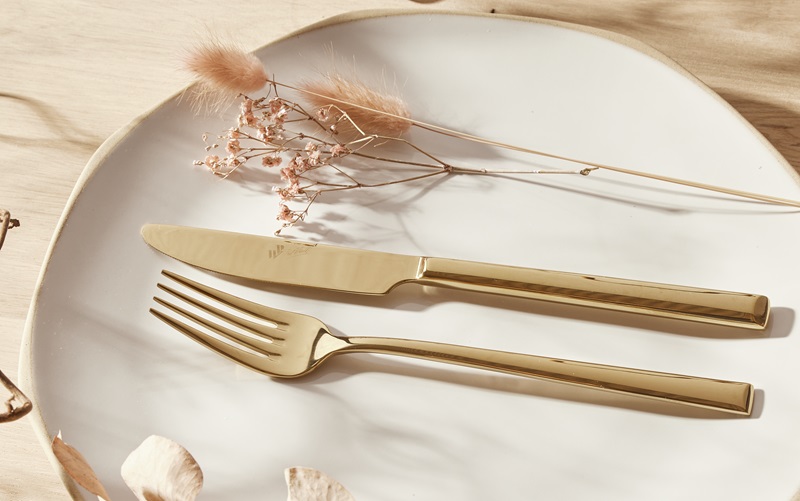
Care instructions
Care instructions for cutlery & kitchen knives
What to do if cutlery gets rust stains?
What to do if cutlery gets water stains from the dishwasher?
How do you polish cutlery properly?
We have compiled this and much more for you.


Cutlery care
All our stainless steel (18/10 and 18/0) and silver cutlery is dishwasher-safe. This makes care much easier. So that you can enjoy your cutlery for a long time, we would like to give you a few more care instructions:
Rinse your cutlery briefly under running water after use. This will prevent food residue from sticking to the cutlery. Always place the cutlery in the cutlery basket with the handle facing downwards. Dose the detergent for your dishwasher according to the manufacturer's instructions. Open the dishwasher as soon as the programme has finished. Dry the cutlery with a tea towel to avoid water stains. Cleaning by hand is always gentler than in the dishwasher.
Avoid washing your cutlery together with non-stainless items.
The rust on these items could transfer to the cutlery (rust film).
Polishing cutlery properly
Sometimes water stains occur when washing in the dishwasher. It can even happen that rust film from other kitchen utensils or pots and pans builds up on your cutlery. Of course, this doesn't look very nice. With one or two simple steps, you can make your cutlery shine again:
Water stains: Hold the cutlery under warm water and then wipe with a soft cloth.
Flash rust: Get a commercially available steel polish. Apply some of the polish to a soft cloth and rub the rust stain with little force until it disappears. Rinse the agent off under running water.


Cleaning and polishing silverware
Why does silver turn black?
Silver reacts with the sulphur in the air. It is therefore completely normal for silver jewellery and silverware in the drawer or cutlery case to turn black over time. You can prevent or delay tarnishing by using your silver cutlery regularly.
It can also help to wrap the cutlery in a cotton cloth.
You can remove the patina with simple household tricks:
The toothpaste trick
Put some toothpaste on a cloth or cotton pad. Rub lightly over your silver-plated cutlery. Caution: The silver surface is softer than that of stainless steel, for example. Micro-scratches can therefore occur during polishing.
The water-salt-aluminium foil trick
Cover a shallow bowl, baking tray or pot with aluminium foil. Then pour in hot water. Add a generous amount (4-5 tbsp) of salt to the water and wait until it has dissolved. Place your silver cutlery in the salt solution for about 30 minutes.
Then dry your cutlery with a cloth.
The black layer should now have largely dissolved.
If you are still not satisfied with the result, you can repeat the process.
Silver bath / silver cloth
Of course, the trade also offers numerous care products especially for silver. These include, for example, special immersion baths, polishing pastes or cloths with which the patina can be easily removed.


PVD finished cutlery
The Vivendi, Austin, Swing, Pano, Padina and Manille cutlery ranges are also available with a PVD finish in the trendy colours gold, copper, champagne or black.
The PVD coating is finished by vaporisation. PVD coatings look particularly attractive, feel good to the touch and are durable. We recommend rinsing by hand to ensure that the PVD coating retains its beautiful and even lustre for a long time.
Knife care - what to consider in general
How to keep your knife sharp for a long time - the right knife care:
Clean by hand: Use warm water, a mild detergent and a soft sponge or cloth.
Cutting surface: Wooden or plastic boards do not wear down the blade unnecessarily. Glass or slate, on the other hand, are not recommended.
Rinse directly: Food acids can sometimes be very aggressive. Therefore, rinse your knife at least briefly under running water after each use.
Does your knife have a wooden handle?
Then make sure it doesn't dry out by oiling it from time to time. To do this, apply a small drop of sunflower oil, linseed oil or beeswax to a kitchen towel and massage it into the handle. Knives with wooden handles are not dishwasher-safe.


